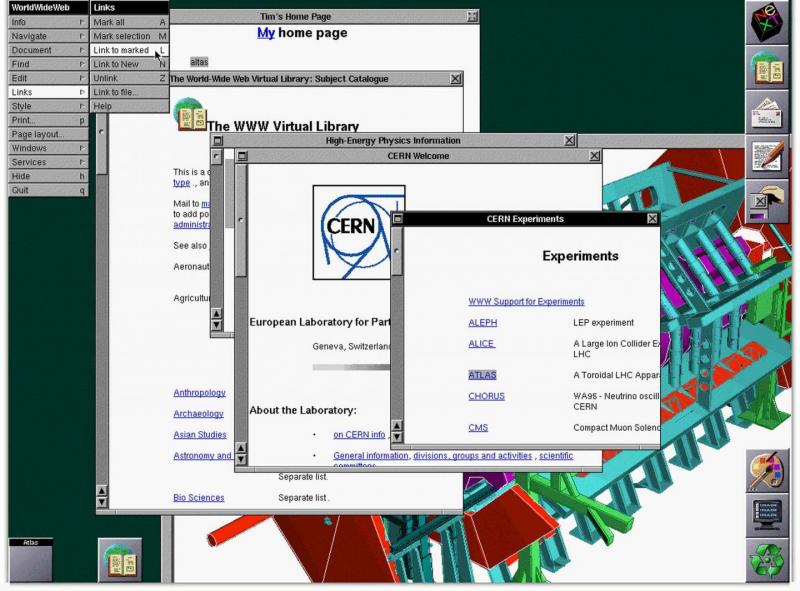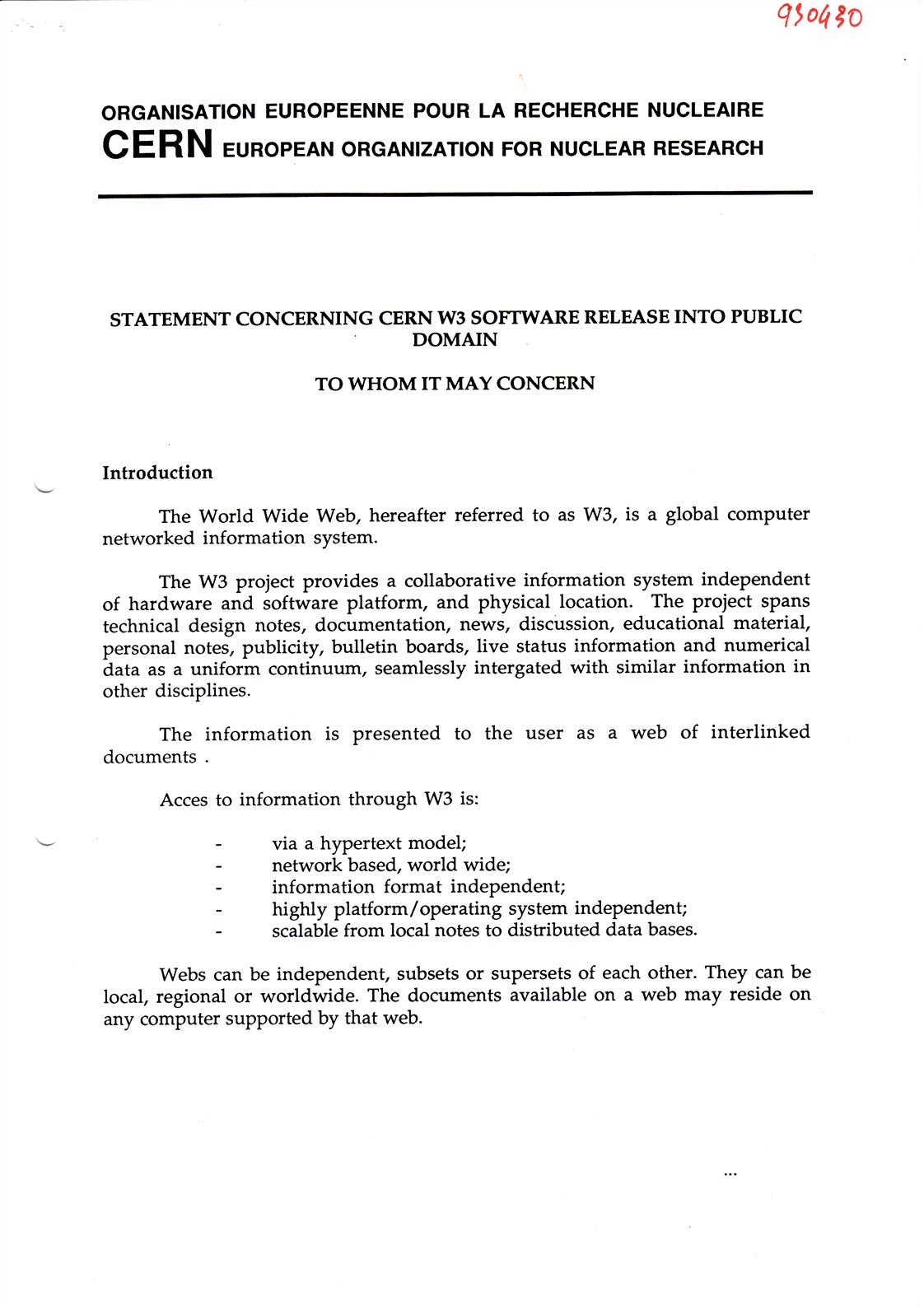Why CERN is recreating the very first web page
The European science organization wants to remind the world that, 20 years ago, it gave us the World Wide Web for free


Tuesday was, for all intents and purposes, the 20th birthday of the World Wide Web. Sir Tim Berners-Lee developed the web and its peculiar language — HTML, HTTP, URL — at the European Organization for Nuclear Research (CERN) between 1989 and 1991, but on April 30, 1993, CERN made the bold and crucial step of releasing the web to the world, free of charge. (Read the key document below.)
To mark the occasion, a group at CERN is working diligently to re-create the first web page. It isn't much to look at, visually — visit it here, once again at its original URL: http://info.cern.ch/hypertext/WWW/TheProject.html, or just look here:

And the page isn't, technically, the first web page, just a version of the original. But the project is more ambitious than just hunting down the original code. "The aim is to preserve the original hardware and software associated with the birth of the web," including the two NeXT computers Berners-Lee used to develop the web and host the first web pages on, says Pallab Ghosh at BBC News.
The Week
Escape your echo chamber. Get the facts behind the news, plus analysis from multiple perspectives.

Sign up for The Week's Free Newsletters
From our morning news briefing to a weekly Good News Newsletter, get the best of The Week delivered directly to your inbox.
From our morning news briefing to a weekly Good News Newsletter, get the best of The Week delivered directly to your inbox.
The project is partly about preserving history, with a dash of nostalgia. At the end of 1993, there were more than 500 websites, CERN says. This year, the World Wide Web has about 630 million websites, and it has changed how we communicate, shop, research, and interact with the world.
"I want my children to be able to understand the significance of this point in time: The web is already so ubiquitous — so, well, normal — that one risks failing to see how fundamentally it has changed," CERN's communications web manager Dan Noyes tells BBC News. "We are in a unique moment where we can still switch on the first web server and experience it. We want to document and preserve that."
James Gilles, CERN's head of communications, agrees. "One of my dreams is to enable people to see what that early web experience was like," he tells the BBC, and he should know: Gilles was a researcher at CERN when Berners-Lee worked there. "You might have thought that the first browser would be very primitive but it was not. It had graphical capabilities. You could edit into it straightaway. It was an amazing thing. It was a very sophisticated thing." Here's what the first web browser looked like, circa 1993:

(Berners-Lee/CERN)
A free daily email with the biggest news stories of the day – and the best features from TheWeek.com
But CERN also wants to use the first web page to try and preserve the free-and-open ethos that convinced the organization to give the web away, without charging royalties. "The web has not brought about the degree of social change some had envisaged 20 years ago," says the BBC's Ghosh. The early web was a two-way information street, almost subversive in its goal to make information and web access universal and free. Now, the web is "dominated by a handful of powerful online companies."
Re-creating the first web page might help us "go back in time and somehow preserve that experience," says Noyes. "Present-day browsers offer gorgeous experiences but when we go back and look at the early browsers I think we have lost some of the features that Tim Berners-Lee had in mind."
While the idea of reliving the early days of a revolution is always pretty unrealistic, celebrating CERN's monumental decision to gift the world the web is a worthwhile endeavor. That choice "was the birth of the Internet as we know it today," Dan Olds at The Gabriel Consulting Group tells Computerworld. "Before this, the internet was mainly used by academics to communicate with each other and exchange data. But after this code was released? Everything changed."
That makes it all the more amazing that we don't have an original copy of the first web page, posted on Aug. 6, 1991, says Jon Brodkin at Ars Technica. He flags this comment from a CERN fan:
It's crazy that 48 copies of the 600 year-old Gutenberg bible exist, yet not one copy of a website made just twenty-odd years ago survives. History will look back at us and roll its eyes. [CERN]

(Source: CERN)
Peter has worked as a news and culture writer and editor at The Week since the site's launch in 2008. He covers politics, world affairs, religion and cultural currents. His journalism career began as a copy editor at a financial newswire and has included editorial positions at The New York Times Magazine, Facts on File, and Oregon State University.
-
 Into the Woods: a ‘hypnotic’ production
Into the Woods: a ‘hypnotic’ productionThe Week Recommends Jordan Fein’s revival of the much-loved Stephen Sondheim musical is ‘sharp, propulsive and often very funny’
-
 ‘Let 2026 be a year of reckoning’
‘Let 2026 be a year of reckoning’Instant Opinion Opinion, comment and editorials of the day
-
 Why is Iran facing its biggest protests in years?
Why is Iran facing its biggest protests in years?TODAY’S BIG QUESTION Iranians are taking to the streets as a growing movement of civic unrest threatens a fragile stability
